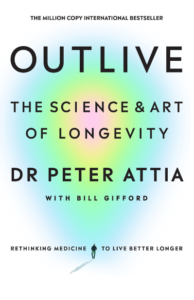Some links in this article may be affiliate links, meaning we may earn a small commission if you make a purchase through them.
“Energy can neither be created nor destroyed, it can only be changed from one form to another”
Albert Einstein
Introduction
The quote by Albert Einstein, “Energy can neither be created nor destroyed, it can only be changed from one form to another,” encapsulates a fundamental principle of physics known as the law of conservation of energy. This blog post aims to delve into this concept, exploring its significance, applications, and implications across various disciplines.
What is the Law of Conservation of Energy?
The law of conservation of energy states that the total energy in a closed system remains constant over time. In simpler terms, energy cannot be created or destroyed within the system; it can only change from one form to another. This principle is foundational in physics and underpins many scientific theories and engineering applications.
The Principle Explained
Energy conservation is rooted in the notion that the total energy of an isolated system is conserved. This means that while energy can be transformed from one type to another, the total amount of energy in the system remains constant. Whether it’s kinetic energy, potential energy, thermal energy, or any other form, the sum of all energies in the system remains unchanged.
Applications and Examples
In everyday life, we encounter numerous examples of energy transformations. From the conversion of chemical energy in food to mechanical energy in our bodies, to the transfer of electrical energy into light and heat in household appliances, the law of conservation of energy governs countless processes. In physics, this principle explains phenomena such as the pendulum’s motion, the operation of engines, and the behavior of celestial bodies.
Just as energy is conserved in physical systems, individuals can adopt a mindset of conservation and optimization in their daily lives. By managing their physical, mental, and emotional energy effectively, individuals can achieve greater productivity, resilience, and overall well-being. Practicing mindfulness, prioritizing self-care, and setting boundaries are essential strategies for conserving and replenishing energy reserves. Additionally, recognizing the interconnectedness of energy within oneself and with others fosters empathy, collaboration, and harmonious relationships. Ultimately, embracing the principles of energy conservation in personal development empowers individuals to lead more fulfilling and purpose-driven lives.
Understanding Energy Transfer
Energy can exist in various forms, including mechanical, thermal, electromagnetic, and nuclear energy, among others. These forms of energy can be transferred from one object to another through processes such as conduction, convection, and radiation. Understanding how energy transfers occur is essential for comprehending natural phenomena and designing efficient systems.
Conservation of Energy in Action
Nature exemplifies the law of conservation of energy in phenomena like the water cycle, where potential energy from water at higher elevations is converted into kinetic energy as it flows downhill. Human-made systems, such as hydroelectric power plants and solar panels, harness energy transformations to generate electricity sustainably. These applications demonstrate the practical significance of energy conservation principles.
The Law of Conservation of Energy and Modern Science
In the context of renewable energy sources, the law of conservation of energy plays a pivotal role in developing sustainable solutions to meet the world’s energy needs. Understanding energy conservation is also crucial for unraveling mysteries of the universe, such as the behavior of black holes and the dynamics of celestial bodies.
Conclusion
The law of conservation of energy, as articulated by Albert Einstein, serves as a cornerstone of modern physics and engineering. Its implications extend far beyond scientific disciplines, shaping our understanding of the universe and guiding technological advancements. By exploring this fundamental principle, we gain insight into the workings of the natural world and pave the way for sustainable innovation.
9. Additional Resources
For those interested in delving deeper into the concept of energy conservation, numerous resources are available. Books such as “Energy and the Environment” by Robert Ristinen and “Energy: Its Use and the Environment” by Roger A. Hinrichs provide comprehensive insights into energy-related topics. Educational websites like the National Renewable Energy Laboratory (NREL) offer valuable information and resources for students and educators alike. Additionally, documentaries such as “The Power of the Sun” and “The Story of Electricity” provide engaging visual narratives on energy conservation and sustainability.




